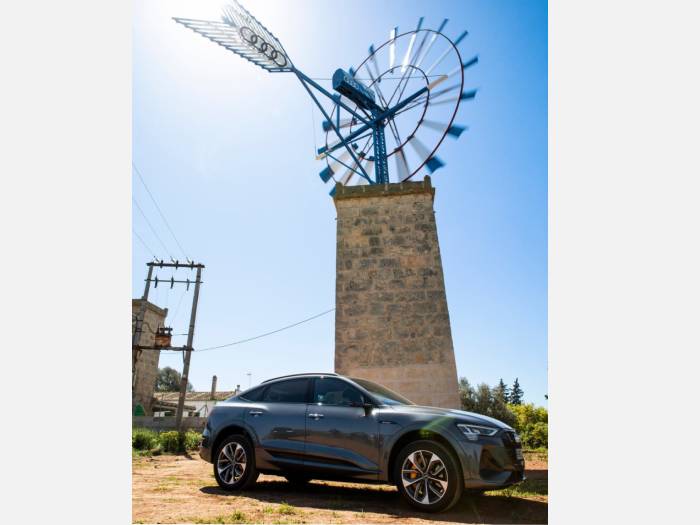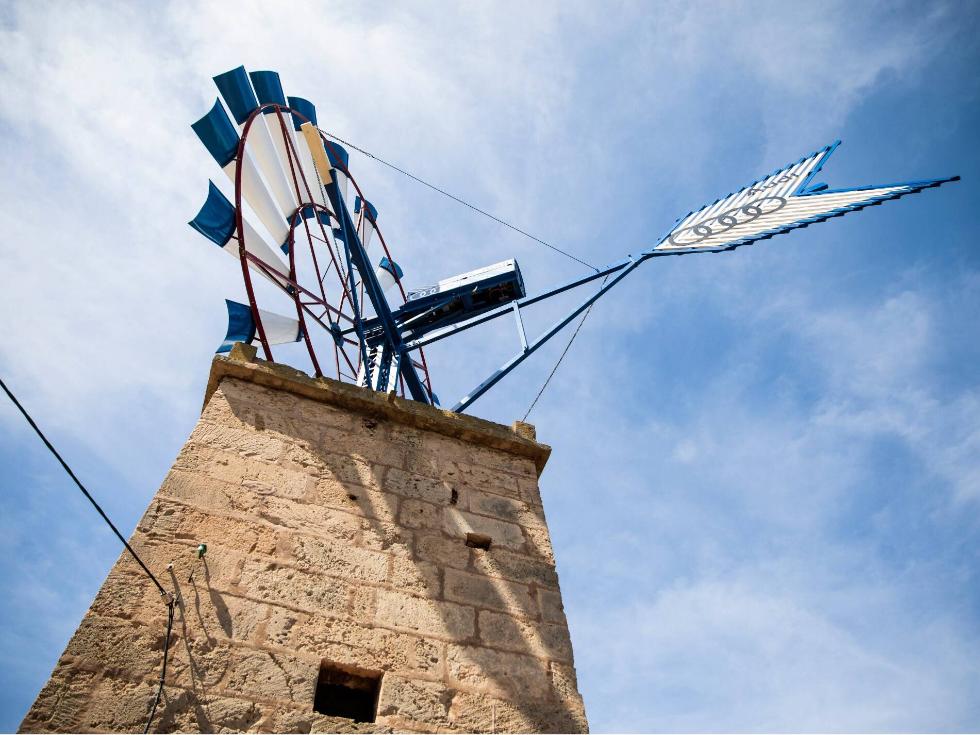Green energy from windmills thanks to Audi electric motors
The project was conceived by an Audi employee, who came up with the idea of restoring an old windmill in Mallorca and converting it into a wind farm using the electric motor of an Audi e-tron test vehicle.
Electric mobility, driven by creativity and imagination, opens up innovative opportunities, such as the one that brings together Mallorca's traditional windmills and the Audi e-tron.
The idea came from Francisco Trigueros Morera de la Vall, Head of Project Microgrid: "Why can't abandoned windmills become a source of green energy to replace fossil energy production?" thought Trigueros three years ago and now the first windmill has been inaugurated, named 'Son España'. It is located in the village of Son Ferrol, was built in 1925 and was the first to be equipped with metal rotor blades.
Ideas for sustainability

In Mallorca there are thousands of windmills whose origins go back to the 14th century and are now largely out of use. “We are using both the windmills and the electric motors of the Audi e-tron test vehicles to produce energy” explains Trigueros, who was able to realise his project after submitting it to Audi's Innovation Management department - a well-established procedure within the four-ringed company, in which many employees submit their ideas to a committee every year. Ideas that, with the right support, can be turned into prototypes or even consolidated into new Audi projects. The initiatives increasingly focus on sustainability and environmental, social and governance criteria (ESG).
Protecting nature
But what is the best way to implement the idea efficiently in this particular case? The answer came from the Spanish hotel chain Meliá, which became a partner in the project and offered its guests four Audi e-tron cars to travel around Mallorca.
According to Trigueros, electric cars are the ideal form of transportation to protect Mallorca's nature and environment, and at the same time a holiday is the perfect time to experience e-mobility: “If just five percent of all hotel guests buy an Audi e-tron, the project will pay off”. Moreover, the annual energy consumption of the electric SUVs used by the tourists can be covered by the redeveloped windmills.
Sustainable wind turbines

A vision that also convinced Audi's Innovation Management department: Project Microgrid was launched back in 2019. The first wind power plant prototype was built by Trigueros and his colleagues using an electric motor from an Audi e-tron test vehicle, which was placed in a 220-kg, 3 metres long, 1 metre tall and 1.6 metres wide box. A wind turbine was connected to it by a gear drive. “Like when you drive on Mallorca's hills, reclaiming energy when going downhill: in this application the engine is in permanent recuperation mode”.
Depending on the size of the wind turbines, up to 22 MWh of energy can be generated each year, which is the amount needed to recharge an Audi e-tron with a 95 kWh battery 220 times. And with a more efficient wind turbine, up to 40 kW of continuous power could be generated.
Zero-emission production
Project Microgrid is just one of Audi's many sustainability initiatives. Audi intends for its production at all locations to be carbon-neutral by 2025, with the goal of becoming completely carbon neutral as a company by 2050.
There are already two Audi zero-emission plants, one in Győr in Hungary and one in Brussels. Audi also has the biggest photovoltaic roof system in Europe. Renewable energies are key to reducing CO2 emissions, as is the recycling, for example, of used electric car batteries, which can also have a second life, as well as other components.
Lithium-ion batteries in particular, when they no longer meet the requirements for their original purpose, can be put to an alternative use, for example as energy storage devices. Only after this second use are they broken down into their individual raw materials and recycled.
Local partners
However, in car production, some CO2 emissions cannot be avoided, so they are offset by supporting climate protection projects. Even the construction of the wind turbine followed the criteria of maximum sustainability: the conversion work was carried out by a local supplier. “It is important for us to integrate partners in the project who work on site and don’t have to fly to the island just for that” confirms Trigueros.
Now the "Son España" mill is integrated into Mallorca's energy network, but in the future it could also be a player in other projects. For example, the renewable energy generated here could be used for hydrogen electrolysis, for stationary charging stations or power banks to charge electric cars or to stabilise the grid. But the use of renewable energy also depends on how this sustainability project develops: “The same principle could be applied on other islands, and even here in Mallorca alone we could convert at least 500 mills”, concludes Trigueros.
Source: AUDI AG
VGI | Responsible OU: VP | Creation date: article date | Class 9.1
